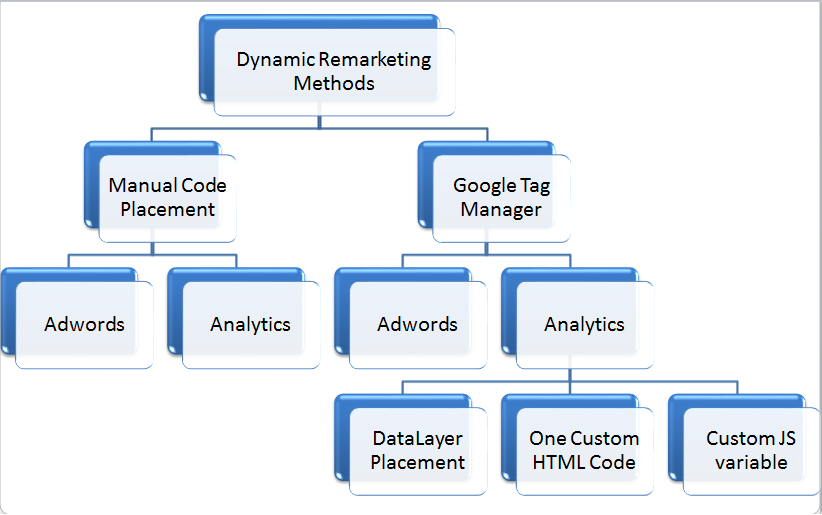Advanced Techniques for Remarketing In Google Analytics
Advanced Techniques for Remarketing In Google Analytics
Blog Article
Taking Advantage Of Remarketing in Google Analytics: A Comprehensive Guide
Using remarketing in Google Analytics offers organizations a critical edge in reaching out to prospective customers. The capability to target individuals that have already interacted with your site offers an unique chance for customized advertising initiatives. By understanding exactly how to craft target market checklists and release them successfully, businesses can substantially improve their conversion prices. The details of establishing up and enhancing remarketing campaigns call for a thorough understanding of target market segmentation and performance evaluation. This guide will clarify the important steps included in harnessing the complete capacity of remarketing in Google Analytics, resulting in boosted advertising and marketing end results.
Comprehending Remarketing in Google Analytics
Remarketing in Google Analytics enables companies to strategically target individuals who have previously communicated with their website or mobile application. By leveraging data from Google Analytics, organizations can develop personalized remarketing checklists based upon user actions, such as web pages gone to, actions taken, or details goals attained. This powerful tool makes it possible for businesses to re-engage with users that have shown rate of interest in their services or products, eventually enhancing the probability of conversion.
Understanding the different types of remarketing strategies is essential for a successful campaign - What Is “Remarketing” In Google Analytics?. Google Analytics provides numerous alternatives, consisting of conventional remarketing, vibrant remarketing, and remarketing checklists for search advertisements (RLSA) Each type offers an unique function and can be customized to meet details marketing purposes
Additionally, examining the performance of remarketing campaigns is crucial for optimizing results. Google Analytics gives valuable insights into the effectiveness of different remarketing strategies, permitting businesses to make data-driven choices and improve their targeting technique. By continually adjusting and checking remarketing efforts based on analytics information, services can make best use of ROI and drive success in their advertising and marketing campaigns.
Establishing Remarketing Campaigns

After establishing up audience checklists, the following step is to link Google Analytics with Google Ads. By linking these 2 platforms, services can seamlessly move audience listings from Google Analytics to Google Ads for remarketing purposes. This integration enables even more exact targeting and better project efficiency.
As soon as the accounts are connected, companies can develop remarketing projects in Google Ads utilizing the target market provides formerly specified in Google Analytics. These campaigns can be customized with details ad creatives, messaging, and bidding process methods to effectively re-engage with past site visitors and drive conversions. By complying with these actions, organizations can take advantage of the power of remarketing to enhance their advertising efforts and enhance ROI.
Using Audience Division Techniques

Predefined segments in Google Analytics enable you to promptly evaluate typical audience categories like new individuals, returning customers, or users who finished a details objective on your internet site. Custom-made segments, on the other hand, allow you to produce special sectors based on particular requirements that are very important to your company objectives. Dynamic remarketing listings immediately readjust based upon customer behavior, revealing tailored ads to individuals that have actually connected with your site specifically ways.
Analyzing Remarketing Performance Metrics
Upon reviewing the effectiveness of remarketing projects in Go Here Google Analytics, the analysis of key efficiency metrics offers beneficial insights into audience interaction and conversion prices. By delving right into metrics such as click-through rates (CTR), conversion prices, price per purchase (CERTIFIED PUBLIC ACCOUNTANT), and return on advertisement invest (ROAS), marketers can assess the success of their remarketing efforts. Assessing these metrics allows marketers to optimize projects, improve audience targeting, and designate budgets successfully to improve total remarketing efficiency.
Enhancing Remarketing Approaches
When refining remarketing approaches in Google Analytics, concentrating on audience segmentation is critical for achieving project success. By splitting your audience into specific sectors based on their behavior, demographics, or interests, you can tailor your advertisements better per group. This targeted method increases the possibility of involving users that have already revealed passion in your product and services, causing greater conversion prices.
One more vital aspect more tips here of enhancing remarketing strategies is continuously testing and refining your campaigns (What Is “Remarketing” In Google Analytics?). A/B screening various advertisement creatives, messaging, or deals can aid you recognize what resonates ideal with your audience and drives the most conversions. By analyzing the performance of these examinations in Google Analytics, you can make data-driven choices to maximize your remarketing initiatives additionally
Moreover, leveraging dynamic remarketing can substantially boost your project results. This function enables you to show tailored advertisements to customers based upon their past interactions with your site, showcasing products or solutions they have formerly watched. By providing customized material to customers based upon their rate of interests and habits, vibrant remarketing can help raise interaction and drive conversions.
Final Thought
In final thought, using remarketing in Google Analytics is a tactical method to target customers that have previously engaged with a website. By developing personalized audience lists and using target market division methods, companies can enhance remarketing projects for increased conversion prices. Examining performance metrics and continually enhancing approaches are crucial for maximizing the effectiveness of remarketing initiatives.
Google Analytics provides various options, consisting of standard remarketing, dynamic remarketing, and remarketing checklists for search ads (RLSA)After establishing up audience checklists, the following step is to link Google Analytics with Google Ads. By connecting these 2 platforms, organizations can effortlessly transfer target market lists from Google Analytics to Google Advertisements for remarketing functions.As soon as the accounts are linked, services can create remarketing campaigns in Google Advertisements using the audience notes formerly defined in Google Analytics.When refining remarketing strategies in Google Analytics, focusing on audience division is extremely important for attaining campaign success.
Report this page